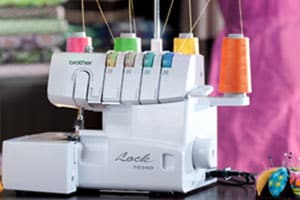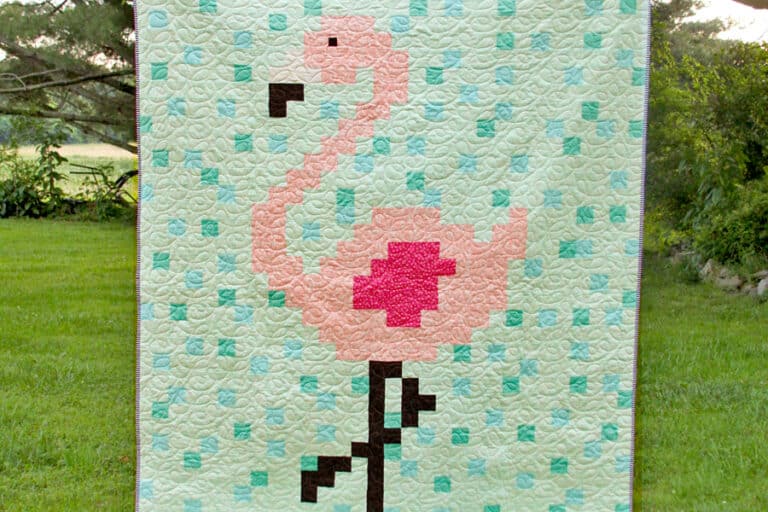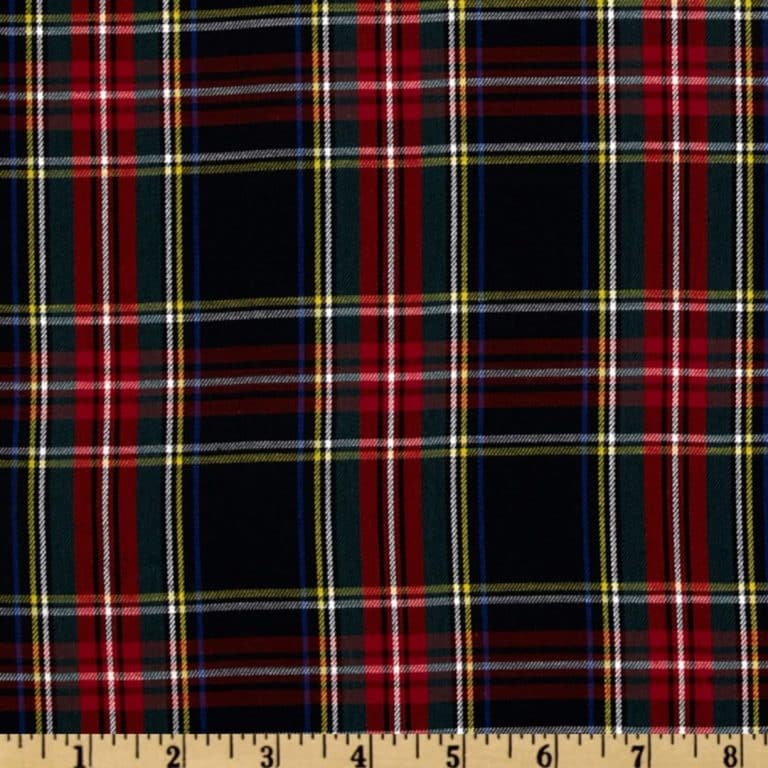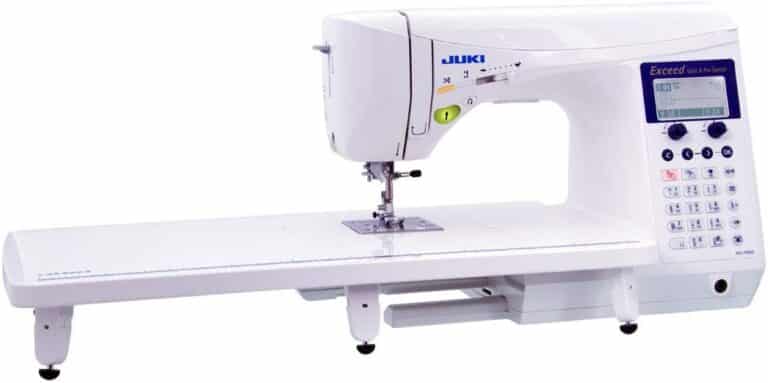Serger vs Sewing Machine – How to Decide Which to Buy

Table of Contents
Serger vs. Sewing Machine
If you sew on a regular basis or pursue it as a hobby, you might be well aware of what a sewing machine does. So, we would like to pay deeper attention to what a Serger is and demarcate the key difference points between the two.
What is a Serger?
Check Today's Price on Amazon
What is a sewing machine?
Amidst the technical advancements offered by a Serger, let’s not forget our beloved classic sewing machines. For those stepping into their newfound liking for sewing, you must know what a device is capable of doing.
A sewing machine, as the name suggests, is a device that is used to perform all kinds of stitches. The idea of stitching with a machine came into existence during the industrial revolution. Thomas Saint floated the idea of sewing machines in the year 1790. The first machine that was made to the markets was able to handle only one type of stitch.
With improved technology, sewing machines were made more efficient and powerful to deliver each, and every type of stitch one can expect. The manual sewing machines are now replaced with electric ones for enhanced efficiency. It also adds to the variance in stitch they offer.
Similarities between a Serger vs a Sewing Machine
The most basic similarity between a Serger and a sewing machine is that both machine can provide excellent stitching. Both the machines can gather the fabric together for a more composed look. The devices can be used for doing neat piping on the cuffs and neck region of your beautiful dress. Either device can be used for stitching a narrow-rolled hemline and also hem knits.
However, a Serger vs a sewing machine cannot be used as a stand-alone machine. Despite its speed and remarkable similarity between the two devices, you will still find a sewing machine to perform certain regular stitches like sewing buttonholes, zippers, facings, and topstitching.
Differences between a Serger vs a Sewing Machine
Though in function and, sometimes even in appearance, the two machines might be similar. But there are a few technical differences between the two devices. These technical differences have been dealt with in detail as follows.
Needles
Both the devices have got needles which is a given. But the difference lies in the number of needles. A sewing machine has only one needle. This needle is used for all the variance in stitches that you can obtain using a sewing machine.
In the case of a Serger vs a sewing machine, there are multiple needles in place. There can be about three to five needles moving in every stitch by a Serger. Depending on the number of needles, different types of stitches can be achieved with a Serger.
2 to 4 thread Serger
A 2 to 4-thread Serger is used for a true safety stitch and a two-thread overlocked edge stitch. These stitches require two threads for every operation, and every stitch will be unique in its creation.
3 to 4 thread Serger
A 3 to 4-thread Serger uses about four threads to make one stitch. This Serger is used to achieve a wider and more stretchable stitch that has a stronger appearance to it. 3 to 4 thread Serger can also be used for rolled hem capacity simply by changing the throat plate on it.
5 thread Serger
A 5-thread Serger is one of the high leagues’ Sergers. It is pretty expensive on the pocket but offers every possible type of seam possibility that you can think of. Three out of five threads are used in making an overlocked edge, while the remaining two are used in making a straight seam line. This machine is particularly used in production work. It eliminates the need to switch machines between a strong seam and seam finish.
Bobbins in a serger vs a sewing machine
A bobbin is a name given to cylindrical thread cones which are used on a sewing machine. These bobbins are the source of the thread for the needle to make the perfect seam. The number of bobbins is associated with the number of needles a machine has.
A sewing machine usually has one or a maximum of two bobbins. Since there is only one needle that provides every stitch, only one bobbin is required for supplying the thread. In the case of a Serger, the number increases.
For 3 to 4 thread Serger, you can expect there to be 2 to 3 bobbins in function. You cannot use a single thread for all the needles because what you are aiming for is a clean, flawless stitch. The use of multiple threads eliminates the chances of entanglement at the needle level. It helps in keeping the stitch clean and gives it a professional look.
Control on speed
Sewing machines are either manual or electronic. But the speed controls in a sewing machine are in our control. Depending on your needs, you can adjust the speed of stitching manually. The reason for the same is sewing machine is much closer to doing hand-stitched work. When it comes to working done by hand, you need more attention to detail and immense dedication to achieve perfection.
In the case of a Serger, the control is automatic. You don’t have to worry about the speed as it is decided by the machine. The flow of thread is not in your control, and every stitch so made is true and unique in itself. Because of multiple threads being used and the purpose is to achieve professional stitches, the Serger does not require any dedication to obtaining the stitch.
Mass production of garments – serger vs sewing machine
When it comes to the mass production of garments, relying on one sewing machine can be tricky. Usually, in the case of mass-produced garments, both Sergers and sewing machines are used together. Depending on the stitch requirement, a machine is put to action.
However, considering the speed aspect of the two machines, a Serger is a more preferred choice for mass-produced items. It helps in getting a desirable speed to perform extremely well for stitching in bulk in a shorter duration. As a result, the process becomes much more efficient.
In the case of a sewing machine, the stitches obtained might have more of a personal touch to them. But reaching a certain goal with a sewing machine might require a lot of machines and a lot of manpower put to work.
The efficiency of a serger vs a sewing machine
Every industry thrives to become more efficient by every day. Efficiency not just helps in reaching bigger goals in shorter periods, it also reduces the entire production cost significantly.
For a more efficient approach, you definitely would want to choose a Serger over a sewing machine. As mentioned earlier, a Serger is able to give around 1700 stitches in a minute. Having that kind of speed in hand can help you finalize a lot of products within an hour.
In the case of a sewing machine, you are pretty restricted in terms of speed. You can amp up your game by using multiple sewing machines, but that will result in an increase in production cost. With a Serger, you can get to your desired goal in no time and aim at a better and more efficient approach.
Variation in design
By this time, one thing that might have become clear is that a sewing machine has a more manual approach than a Serger. When working on a sewing machine, you can bend and twist your fabric as much as you want. As a result, you are the master of what type of stitch you desire, and you can make it happen.
In the case of a Serger, you don’t have that much freedom and liberty while making the stitch. As a result, you won’t be able to get many variations in the stitching pattern. You are totally at the mercy of what the machine does. Indeed, a Serger brings a better speed and efficiency for the entire task; it does not let you be more creative with your work.
With a sewing machine, you can change the design, pattern, and layout of the stitch as much as you want. You are not at the mercy of the machine, and you can do what you wish to with your fabric.
Advantages of using a sewing machine vs a serger
Both the machines have their own perks. But there are a few areas where one thrives better than the other.
Electricity requirement
In recent times we are seeing an upsurge in demand for electric sewing machines. Otherwise, a sewing machine is capable of performing its function without the need for electricity.
A lot of sewing machines run on complete manual labor. So, you are not at the mercy of electricity to get your job done. But in the case of Sergers, you are heavily reliant on an electricity source. No Serger can work on manual labor. This means that you cannot port a Serger easily without keeping into consideration an electricity source.
Work flexibility
As mentioned earlier, a sewing machine allows you to bend and twist the fabric as per your liking. It gives you more freedom to explore every stitch differently. You can cater to the looks and needs of the fabric in the case of a sewing machine.
The same cannot be achieved in a Serger because it is truly mechanical and automated. When using a sewing machine, you can easily reverse a stitch that you feel has gone wrong and work with it immediately. This is hard to do in the case of a Serger stitch.
Easy to handle
When it comes to handling sewing machines, it is pretty much a cakewalk to do the same. Because sewing is such a common activity across the globe, it is easy to expect every house to have at least one machine.
The reason for the popularity of the sewing machine was that despite being a mechanical system, you have full control over the stitch. It is so user-friendly that you don’t have to bang your head learning about it.
Freedom to work
It has been reiterated enough how much freedom a user has when working with a sewing machine. You have the liberty to edit your work in between the stitch and change it entirely. It requires you to pay a lot of attention to detail. There is lot of room for mistakes as they can be reversed while using a sewing machine.
Beginner-friendly
A sewing machine is more beginner-friendly than a Serger. Suppose you are a newbie starting to learn the techniques of sewing, nothing better than using a sewing machine. It is easier to use and lets you work at your own pace. All you would require a small beginner’s course to learn a few tips and tricks, and you will be ready to get your hands working.
Advantages of using a Serger
Even though a sewing machine appears a more desirable option at this point, there are a few advantages offered by a Serger that a sewing machine can’t.
Faster
A Serger is indeed much faster in comparison to a sewing machine. With an efficiency of more than a thousand stitches in a minute, you can get a lot of work done. The increased speed has been made possible because of the use of multiple threads and bobbins.
There is no need for manual labor while using a Serger. The machine does the work on its own and provides you with a fine and flawless stitch at lightning speed. You end up saving a lot more time as compared to a sewing machine.
Highly effective and efficient
The efficiency of stitching increases significantly when using a Serger. This device can cut stitches and cut through a fabric instantly. This means you can cut as well as stitch your fabric simultaneously using a Serger. In the case of a sewing machine, you don’t have that option, and your efficiency reduces significantly.
Finesse
The fine stitch obtained with a Serger is truly unbeatable. From the beginning till the end, a Serger delivers a perfect stitch. Even at the tricky portions like the sides, a Serger provides a clean and crisp stitch pretty effortlessly.
Industrial use
The speed and efficiency offered by a Serger make it a great choice for industrial use. A Serger can help mass produce items at a faster and more effective rate. You can get a lot of work done in no time, with minimum manual assistance.
Such fast results are hard to achieve with the help of a sewing machine. You will be required to set up more than one sewing machine. This will result in more investment in manual labor, causing a significant increase in pricing.
Our Recommendation for choosing a serger vs a sewing machine
After this detailed read, we are finally in the position of answering the question, should you buy a Serger or a sewing machine? We feel that it is more of a subjective choice than a logical one.
Depending on your sewing needs, you can choose the machine of your liking. If you love playing with technology and like to enjoy its involvement in stitching, then a Serger is your machine.
But if you are old school and like to make the switch manually and have better control over it, then the sewing machine is the perfect fit for you.






